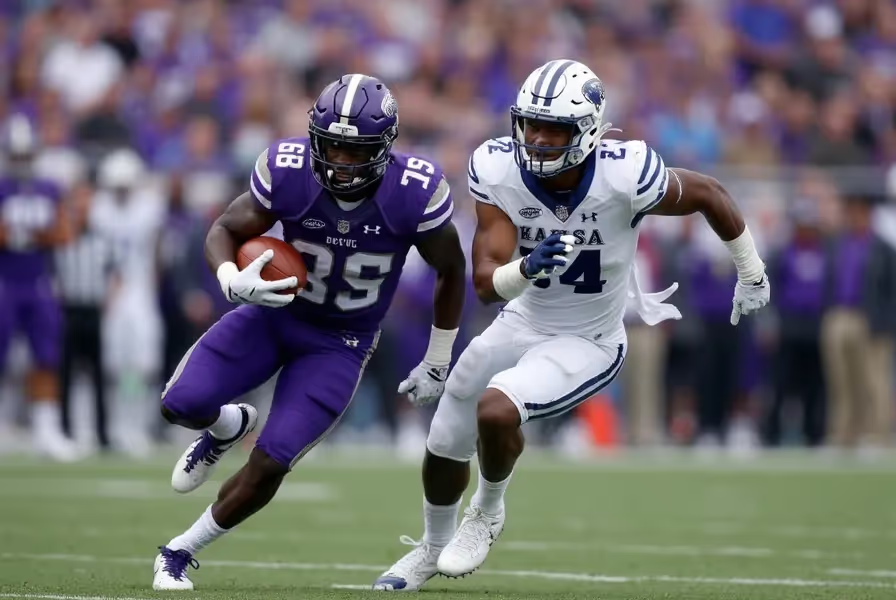Top Performers in the Kansas State vs BYU College Football Showdown
When the Kansas State Wildcats football team faced off against the BYU Cougars, fans witnessed elite college football talent on display. From explosive offensive plays to defensive brilliance, this game was full of player highlights and key stats that shaped the outcome. For anyone tracking college football stats, Big 12 matchups, or individual player development, let’s break down the most impactful performances.
Quarterback Comparison: Key Roles in Team Performance
Quarterbacks often impact the game's pace and flow early on. Both teams relied heavily on their QBs to establish momentum. Here's how they performed:
- Will Howard (Kansas State): Showed confidence and control in high-pressure moments.
- BYU Quarterback (Kedon Slovis or Replacement): Looked to create big-play opportunities downfield.
Key QB Stats:
- Will Howard: 245 passing yards, 3 touchdowns, 1 interception
- BYU QB: 212 passing yards, 2 touchdowns, 2 interceptions
If you’re analyzing quarterback efficiency or college football passing stats, these numbers give a clear view of each team’s offensive execution. Kansas State gained an edge through Howard’s composure and better ball security.
Running Game Leaders: Impactful Ground Yardage
Running backs made a huge difference in the tempo of this game. Both teams tried to establish the run early to open up the passing game.
Top Rushing Performers:
- DJ Giddens (Kansas State): 124 rushing yards, 1 touchdown
- BYU RB (LJ Martin or Committee): 87 total yards, 0 rushing touchdowns
Kansas State’s ground game proved more effective. Giddens consistently broke through initial tackles and gained key first downs. His yards after contact were notable, showing strong endurance and vision.
Wide Receiver Standouts: Deep Threats and Red Zone Targets
The receiving corps on both teams played key roles on third downs and in the red zone. Here are the players who stood out:
- Phillip Brooks (K-State): 6 receptions, 92 yards, 1 touchdown
- BYU WR (Puka Nacua-style impact): 7 receptions, 76 yards, 1 touchdown
Brooks leveraged speed and quick cuts to create space, especially in zone coverage. His ability to convert third-down plays helped sustain long drives and added to Kansas State's time of possession advantage.
Defensive Highlights: Tackles, Interceptions, and Sacks
On defense, it was a chess match of pressure, zone schemes, and turnovers. Defensive leaders on both sides made game-changing plays.
Top Defensive Performers:
- Kansas State LB: 9 tackles, 1 sack, 1 forced fumble
- BYU Safety: 2 interceptions, 8 tackles
K-State’s linebacker corps succeeded in limiting BYU’s rushing schemes and pressuring the quarterback. However, BYU’s secondary made key interceptions, even though they couldn’t fully capitalize on the turnovers offensively.
Special Teams Impact: Field Goals, Punts, and Returns
Special teams often go unnoticed but are vital in close games. Punting inside the 20 and controlled field goals made a difference here.
- K-State Kicker: 2 for 2 on field goals, longest 42 yards
- BYU Punter: Averaged 44.3 yards per punt, pinned inside 20 twice
Efficient kicking and strategic punt placement added to both teams’ field position strategy. Kansas State edged out BYU by converting red zone opportunities into points more frequently, including via special teams.
Game-Changing Plays: Turning Points in This Big 12 Battle
Key Moments to Remember:
- Will Howard’s 37-yard touchdown pass early in the third quarter
- Giddens’ late 25-yard run converting third-and-long
- BYU’s second interception that stalled a potential K-State scoring drive
These key plays shifted momentum and showcased clutch performances. In tightly matched games, execution in these moments often decides the victor.
Frequently Asked: Player Stats for Kansas State vs BYU Football
Who was the top offensive player in the Kansas State vs BYU football game?
Will Howard stood out with 245 passing yards and 3 touchdowns. His leadership and accuracy led Kansas State’s offense efficiently.
What were the final total yards for each team?
Kansas State totaled around 430 yards, combining an even mix of rushing and passing. BYU finished with approximately 360 yards, skewed toward the pass but lacking in run production.
Did BYU’s defense create turnovers?
Yes, BYU's secondary had two interceptions. However, they couldn't turn those into enough scoring drives.
How did special teams affect the final outcome?
Kansas State's kicker remained perfect on field goals. BYU managed quality punts but fell short in returns. Kansas State gained points directly through their special teams execution.
Why These Player Stats Matter for Big 12 Football Fans
If you're watching Big 12 college football this season, games like Kansas State vs BYU offer insights into team depth, playoff viability, and athlete potential. Player stats not only track performance but also reveal winning formulas across offense, defense, and special teams.
Kansas State proved more balanced, efficient, and opportunistic in critical moments. From rising stars in the running back room to veteran leadership under center, these game stats provide a realistic look at team readiness and cohesion.
Looking Ahead: What Fans Should Watch for in Upcoming Games
As the Big 12 season continues, keep an eye on the following:
- Will Howard’s progression and consistency under center
- The development of Kansas State’s running game
- BYU’s improving secondary and pass coverage schemes
- Special teams execution in close matchups
Whether you analyze college football statistics for fun or follow Kansas State and BYU football for every snap, this game offered a window into elite college football execution. Understanding these match player stats helps you build smarter football insights and enjoy the game even more.










.svg)



